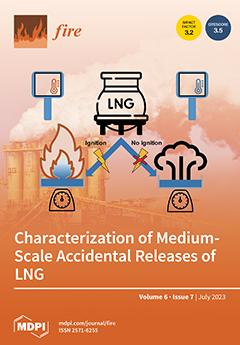Open AccessArticle
Modeling of Evaporation Rate for Peatland Fire Prevention Using Internet of Things (IoT) System
by
Lu Li, Aduwati Sali, Nor Kamariah Noordin, Alyani Ismail, Fazirulhisyam Hashim, Mohd Fadlee A. Rasid, Marsyita Hanafi, Sheriza Mohd Razali, Nurizana Amir Aziz, Imas Sukaesih Sitanggang, Lailan Syaufina and Ati Dwi Nurhayati
Cited by 1 | Viewed by 2969
Abstract
Peatland refers to the peat soil and wetland biological environment growing on the surface. However, unexpected fires in peatlands frequently have brought severe greenhouse gas emissions and transboundary haze to Southeast Asia. To alleviate this issue, this paper first establishes an Internet of
[...] Read more.
Peatland refers to the peat soil and wetland biological environment growing on the surface. However, unexpected fires in peatlands frequently have brought severe greenhouse gas emissions and transboundary haze to Southeast Asia. To alleviate this issue, this paper first establishes an Internet of Things (IoT) system for peatland monitoring and management in the Raja Musa Forest Reserve (RMFR) in Selangor, Malaysia, and proposes a more efficient and low-complexity model for calculating the Duff Moisture Code (DMC) in peatland forests using groundwater level (GWL) and relative humidity. The feasibility of the IoT system is verified by comparing its data with those published by Malaysian Meteorological Department (METMalaysia). The proposed Linear_DMC Model and Linear_Mixed_DMC Model are compared with the Canadian Fire Weather Index (FWI) model, and their performance is evaluated using IoT measurement data and actual values published by METMalaysia. The results show that the correlation between the measured data of the IoT system and the data from METMalaysia within the same duration is larger than 0.84, with a mean square error (MSE) of 2.56, and a correlation of 0.91 can be achieved between calculated DMC using the proposed model and actual values. This finding is of great significance for predicting peatland forest fires in the field and providing the basis for fire prevention and decision making to improve disaster prevention and reduction.
Full article
►▼
Show Figures





